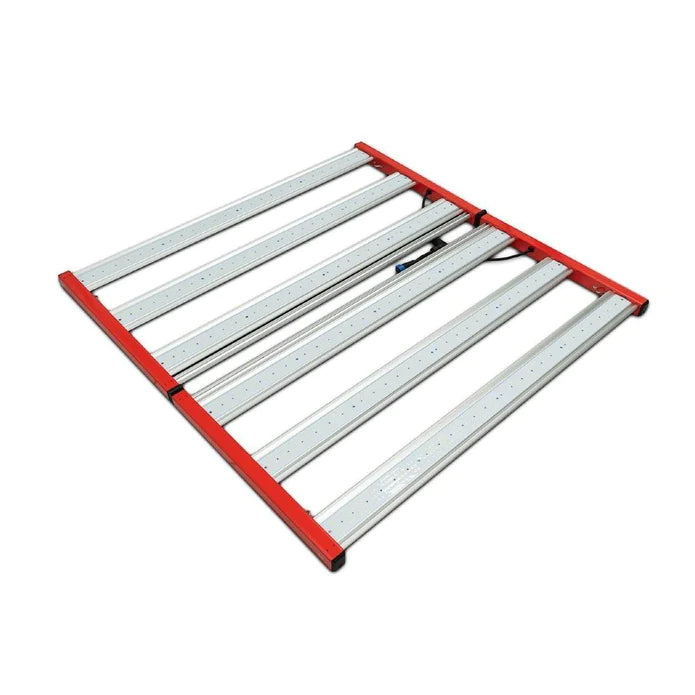
Ice Water vs. Hydrocarbon Extraction
, by BVV Team, 5 min reading time

, by BVV Team, 5 min reading time
In today's hemp processing market, current hemp processing methodologies can typically be divided into two distinct categories: solvent-based extraction methods and solventless-based extraction methods. In this article, we will compare both to better understand their benefits and drawbacks.
In today's hemp processing market, the current extraction methodologies can typically be divided into two distinct categories: solventless-based and solvent-based. Among the most popular of each are ice water extraction and hydrocarbon extraction respectively. While both accomplish the goal of extracting the hemp plant's cannabinoids and terpenes, they do so in vastly different ways.
Solventless-based extraction methods utilize mechanical separation to harvest the trichome heads of the hemp flower. These contain essential oils including cannabinoids and terpenes. During a solvent-based extraction method, hemp biomass is saturated in a solvent. As the solvent passes through the biomass, the cannabinoids and terpenes are stripped from the rest of the plant material.
While these methods differ drastically in practice–one method is not necessarily better than the other. They both successfully capture the cannabinoid and terpene profile of the hemp plant. Compare both for yourself here to learn which method of extraction is right for you.
Ice water extraction is the preferred extraction method of the top solventless concentrate producers. The extracts that the ice water extraction equipment produces are commonly referred to as bubble hash or ice water hash. In preparation, the hemp material is typically frozen to keep the trichomes as brittle as possible.
Once sufficiently chilled, the hemp biomass is then combined with ice and water in a 1:1:1 ratio inside an agitation vessel, and the system cools to 1°C. Once a chilled temperature is achieved, the hemp ice water mixture is then agitated by stirring the material for 5-20 minutes. This agitation is the essence of ice water extraction: it assists the separation of the trichome heads from the plant material. As the trichomes separate from the plant matter, they fall to the bottom of the vessel because of their greater density.
After the agitation stage has been completed, the trichome-rich ice water is then drained over a series of fine micron screens that are layered in decreasing aperture. Then, the mixture is further rinsed with water to separate, collect, and grade the hash. The fine micron screens range from 220 microns down to 25 microns.
Finally, the freshly harvested trichome heads are air-dried within low humidity conditions (30-45% humidity) at ambient temperatures (60℉-70℉). This accelerates the ice water extraction process and limits degradation.
Alternatively, the hash can also be dried inside a freeze dryer. Once the hash has been dried, it can then be packaged as a concentrate or further refined by pressing to create rosin.
This extraction method captures the full essence of the original plant material, creating a high-quality flavorful extract without the addition of hazardous solvents. While ice water extraction is relatively low-yielding and labor-intensive in comparison to solvent-based extraction techniques, ice water extraction lends itself to creating a natural, potent extract with relatively low startup cost and operational hazard. If you’re willing to put in the excess work to create high-quality ice water hash, it can be sold at a premium in today's market due to its growing popularity.
Now that we’ve weighed the pros and cons, consider these questions if leaning toward ice water extraction:
While ice water extraction has recently experienced a resurgence in popularity, hydrocarbon extraction has been a mainstay in the hemp extract market for several years. Hydrocarbon extraction, either by butane or propane, is an excellent choice for its high yield and relatively low cost. Hydrocarbons are nonpolar, so they’re great candidates to extract nonpolar cannabinoids and terpenes.
Hydrocarbon extraction methods start by saturating the biomass material with a liquid hydrocarbon solvent. As it passes through the biomass, it dissolves cannabinoids and terpenes while extracting them from the plant material. Once the saturation is complete, the cannabinoid and terpene-rich hydrocarbon solvent is then heated to evaporate the solvent out of the extract. Due to butane and propane's lower boiling points (30°F/-1℃ and -43.6℉/-42℃ respectively), the bulk of the solvent can recover during this initial distillation process. The remainder of the solvent can be removed to undetectable levels under light heat inside a vacuum oven. This preserves precious terpene profiles and creates a flavorful extract.
Among its high yield and terpene preservation, hydrocarbon extraction also lends itself to creating multiple consistencies including shatter, wax, diamonds, and sauce. The main drawback of hydrocarbon extraction is its high flammability. These solvents’ lower boiling points make these compounds highly combustible, requiring careful safety measures. In most cases, you’ll need to operate within a C1D1 explosion-proof space.
Ask yourself these questions when leaning towards hydrocarbon extraction:
Now that you know what is involved in ice water and hydrocarbon extraction, you can shop for the right high-quality equipment at BVV. If you need more help deciding between the two methods or have further product questions, reach out to us to hear feedback from an extraction industry leader.


